Bring your innovative ideas to reality by using the methodology and proprietary technology of Ideation Control Tower
They are watching you
Less Brown often speaks of the fear of lying on his deathbed and having all of the ideas that ever came to him, standing with great concern and stating specifically:
“Why didn’t you do anything with us? Out of the billions of people that exist on this earth, we came to you and now we will die with you. Why didn’t you do anything with us”.
When I first heard that message: I was too young and invincible to understand what it meant. Each year as I got older, dreamed bigger and failed in many attempts, I began to better understand those fears his hospital visitors had expressed.
As I moved through my 50s, I would occasionally hear them pacing in the halls as I was doing any and everything possible to avoid moving my dreams forward. And to be honest, I fear them even more than I fear death itself, the fear of not living to manifest my own destiny. If you’re anything like me then you also have 100s of notebooks piled up on shelves of ideas and designs you started, that you knew would change the world in both small and large ways – and there they are – on that shelf and coming to you at night in potentially your darkest moments, as you see things falling through your grasp of control.
If you can identify with this, then you know exactly what I used to feel since going through a catastrophic divorce back in 2011 and even before. But the divorce was the one event that wiped me out mentally, physically, and spiritually and took every ounce of energy just to survive and get to the other side.
Ideation in Control
I no longer keep those notebooks filled with ideas bound eventually for a landfill after I’m gone because work them – all of them – at their appropriate time. I do this by using a process I call the Ideation Control Tower which was a concept conceived back in 2013 during the thick of the divorce.
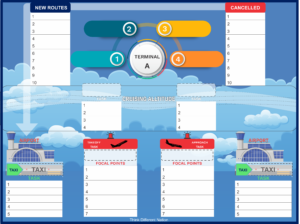
Why do I call it the Ideation Control Tower? Years ago I learned that the most important time for air traffic control in the journey of a flight is both at take-off and at landing. When the planes are on the ground there is significantly less concern and attention being paid to these planes or in my case ideas or projects. This implies if you use the analogy of boarding planes for your ideas then at first there is no concentrated effort being exerted in the development of those ideas.
Let’s evaluate it further. The way the concept works is very simple. Imagine an airport with planes bound for different destinations around the world. With that airport, you have air traffic control which is responsible for planes taking off and landing as they travel to and from their different locations. For me, I look at each plane as an idea, project, book, or whatever concept I am trying to bring to a targeted outcome – small or large, and I stage those planes according to where they are from the standpoint of achieving their targeted outcomes.
But there are 3 key things to remember:
1. The entire planning and tracking process occurs in an airport structure specifically because, with an airport, different levels of attention are paid to the planes depending on where they are in the different stages of the journey.
2. Each project or idea is considered as a plane since those projects, ideas or planes are heading to different destinations.
3. Most importantly, I consider a “destination” as what I call an “Outcome”. For people familiar with the discipline of project management, it uses the term Sprints. These can be considered as small or micro projects within the larger project. If you’ve had any exposure to the concept of Neuro Linguistic Programming, which is understood as the study of the process of the way humans work, it uses the term “Outcome” which it considers as a Goal or objective someone seeks to achieve. They can be as large and grand or as small and targeted as the user decides which provides an incredible amount of flexibility in planning. Within this airport model, the pilot chooses the Outcome they hope to achieve as well as the desired timeline for that achievement. The pilot also is the only person who can determine when that outcome has been achieved and what constitutes that achievement. And lastly, the achievement of that outcome typically doesn’t translate to anything one would normally consider as the successful completion of the project but rather a significant event that moves the flight further towards its ultimate desired outcome. For example, one of my ideas The Invest Out is now at a prominent place within its journey, in a stage called “On Approach” meaning it is close to landing. I personally see the landing of the Invest Out outcome not as the sale of the company or even the generation of revenue but rather, the completion of all applications on the website and being able to turn the site on for users. Once it lands completely and after I’ve gone through a number of tasks related to the stage of Taxi In, Invest Out will be repositioned to Taxi Out in preparation for its next targeted Outcome which will change to revenue generation.
In piloting Invest Out in this way I am therefore able to watch it and pay particular focus at the most important times or key milestones while diverting my attention to other Outcomes or flights as I work to move multiple outcomes to their desired destinations.
New Routes
The first stage of the journey is the stage of New Routes. New Routes are the first primary stage that all projects endure and mind you, many never leave this stage. This is the time where the potential for the idea was first conceived – just an inkling of a possibility and may have emerged from questions like “What If” and “How can I” or “why can’t I”. This is the phase where you work to pull pieces of relevant experiences together to see what’s possible.
No plans are developed or made at this stage. You’re not even sure whether the idea is even viable but it’s worth noting it so that additional points that support or refute the possibility can be captured. Now, this is important for many reasons you will shortly understand. New Routes are simply a capture of what may be possible without any further action being required.
Boarding:
Boarding is the second stage of the process and it’s where the ideas that are aligned with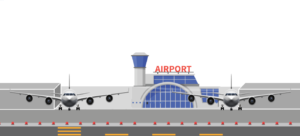 our strongest passions, are selected as serious candidates for the journey towards the desired outcome. It’s worth noting that all of these flight stages will potentially need to be adjusted based on the desires of the pilot because all outcomes don’t follow the same path. All outcomes moving from New Routes to Boarding are at a place where energy of purpose is considered to exist. Typically, this is an automatic process in that you can’t seem to stop yourself from thinking about that concept or outcome. There’s something that speaks about some part of who you are.
our strongest passions, are selected as serious candidates for the journey towards the desired outcome. It’s worth noting that all of these flight stages will potentially need to be adjusted based on the desires of the pilot because all outcomes don’t follow the same path. All outcomes moving from New Routes to Boarding are at a place where energy of purpose is considered to exist. Typically, this is an automatic process in that you can’t seem to stop yourself from thinking about that concept or outcome. There’s something that speaks about some part of who you are.
I also consider the 4 Ps of Pain, Process, Passion, and Path i.e. outcomes are believed to be achievable based on an alignment with the above 4 items.
1. Pain the outcome addresses,
2. Process that will be followed to pilot the flight or move the outcome forward;
3. Passion captured that shows sustaining power to endure;
4. Path or routes that will be followed within the process;
What needs to truly be considered at the boarding stage is how many legs exist in the journey? Longer projects have multiple legs, outcomes, and requirements and typically require considerably effort to carry the project through to fruition.
Taxi Out:
Taxi Out is the stage where the idea moves to true and targeted consideration. Up to this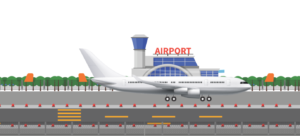 point no money would have been spent on the project, even if your outcome will eventually require it to bring it to reality. Innovators should actively seek to determine the strength of the flight i.e. does it speak who you really are and what you truly want. Additionally, the pilot should look out and determine both what Head and Tail Winds may exist. Headwinds are the forces that may be acting against the desired outcome from coming to fruition. Tail Winds are those forces that will assist in moving the outcome forward and thus represent positive trends that may be occurring.
point no money would have been spent on the project, even if your outcome will eventually require it to bring it to reality. Innovators should actively seek to determine the strength of the flight i.e. does it speak who you really are and what you truly want. Additionally, the pilot should look out and determine both what Head and Tail Winds may exist. Headwinds are the forces that may be acting against the desired outcome from coming to fruition. Tail Winds are those forces that will assist in moving the outcome forward and thus represent positive trends that may be occurring.
Outcome Based Focus
During the Taxi Out phase I also consider the desired Outcome. One of the best ways I’ve learned to structure my outcomes is to look at it from the standpoint of “is this something I really want” not just something my ego or any other external force may be driving me to achieve. Many of us are driven by those forces that blindly blow us towards someone else’s outcome and it can take a lifetime of years before we ever really know that it was not our outcome we’ve been seeking to achieve but someone else’s goals and desires placed into our subconscious as an action item. A well-informed outcome is a great tool that is derived within the methodology of Neuro Linguistic Programming that can help you to determine if your desired outcome is truly yours, whether or not it is actually achievable but aligned with your goals.
There are 6 steps to performing a well-informed outcome including:
1. The first step involves capturing what you want to achieve. It must be captured in positive terms. In other words, it must move towards the positive of what you are seeking to achieve as opposed to what you are trying to avoid.
2. It must be tangible. In other words, while world peace is a great conceptual outcome, it cannot be touched. The outcome must be able to be represented as a flight through the different stages of the journey in terms of the 5 + senses of sight, sound, smell, touch, and taste.
3. The pilot must truly believe, regardless of doubts, that it is achievable. The idea here is that if someone else has achieved it, why can’t you.
4. You must have the belief that all of the required resources required to take the flight to the destination are or will become available. With respect to flights, it doesn’t really matter if you don’t have those resources today. This is directly aligned with Newton’s Law of Motion.
5. You must have considered both the positive and negative effects of a successful flight. According to the Principle of Cause and Effect, for every action, there is an equal and opposite reaction with many unintended consequences, whether you see them or not.
These statements can be kept general and are solely intended to frame the idea in terms of actual ideation point of clarity.
Take Off:
With the airport model, Air Traffic Control considers take-off as one of the most significant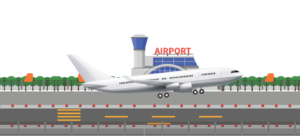 events in the journey of a flight. With respect to the Ideation Control Tower, Take-Off can typically involve the first significant expense of time, money, energy or any other limited resource that challenges the success of the flight.
events in the journey of a flight. With respect to the Ideation Control Tower, Take-Off can typically involve the first significant expense of time, money, energy or any other limited resource that challenges the success of the flight.
Once the plane takes off, it is in flight which means that a significant amount of energy will be exerted at different levels, all of the way through to the point where the outcome is landed. With “More Near Than Before” however, that energy is stretched over an extended length of time which means it becomes more manageable in scope, stress, pressure, and assurance that it will be landed. This is greatly assured. As long as you continue to pilot the flight, you will be able to land successfully. This means there must be fluidity with respect to how energy is exerted throughout the entire duration of the flight. That energy could be therefore in the form of actual groundwork, time and attention, the expenditure of cash, or the contracting of secondary resources such as virtual workers by using Fiverr, Up-Works, or Guru.com for example. I have been using virtual workers since 2006 while flying, a key outcome that taught me all I know now about the art of the long flight.
Cruising Altitude:
The Cruising Altitude stage is the stage of steady state and simply doing what the pilot needs to do to advance the project. Remember your idea may continue to cruise without a specific date selected for landing while burning fuel (money to keep the idea gradually to a desired outcome. This phase may include a great deal of focus in scheduling calls, identifying viable resources to assist you in handling passenger management. Secondly, momentum can typically be maintained with a minimum burn of energy by leveraging outsourcing service providers that can be found on Fiverr, Upworks and Guru.com
do to advance the project. Remember your idea may continue to cruise without a specific date selected for landing while burning fuel (money to keep the idea gradually to a desired outcome. This phase may include a great deal of focus in scheduling calls, identifying viable resources to assist you in handling passenger management. Secondly, momentum can typically be maintained with a minimum burn of energy by leveraging outsourcing service providers that can be found on Fiverr, Upworks and Guru.com
The key point of note here is that you focus your attention where attention is necessary and you move your other planes into auto-pilot by leveraging those same external resources or outsourced service providers to manage the everyday actions.
Approach & Landing:
The Landing is the second to the last stage of the flight and typically is centred around the ultimate delivery of the desired final outcome. The pilot should always be thinking of the next step. If this outcome is just a refuelling stop then you should be considering how quickly you can move the flight back to taxi out in preparation for the next outcome. That is again, maybe one of many outcomes on the journey of this flight as it travels towards its ultimate destination.
ultimate delivery of the desired final outcome. The pilot should always be thinking of the next step. If this outcome is just a refuelling stop then you should be considering how quickly you can move the flight back to taxi out in preparation for the next outcome. That is again, maybe one of many outcomes on the journey of this flight as it travels towards its ultimate destination.
Actionable steps include:
Determining how the next outcome should be defined, planned, and considered as achieved. The pilot should also consider what additional resources may be required to support the flight and whether or when those resources may become available to support the journey.
Taxi In:
The final approach is the last phase of the journey because it can be seen and felt as a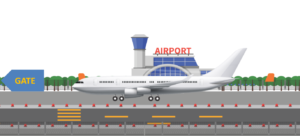 significant and tangible point of traction towards completion, at the peak of momentum. Taxi In creates a strong sense of accomplishment which is why I work with achievable outcomes and continually repeat the mantra of “More near than before”. This means that emotions will additionally build as the path clears and small gains are accomplished, momentum builds and fall as the journey wanes, energy levels drop, and all of the other seemingly insurmountable obstacles that will come (and they will come) and make you feel the flight is futile. The famous poet and author of the Jungle Book Rudyard Kipling, practised true stoicism when he stated, “if you can treat all success and failures, an imposter just the same, then you are a balanced man.” Balance is key to being a successful pilot on these long journeys to deliver desirable outcomes.
significant and tangible point of traction towards completion, at the peak of momentum. Taxi In creates a strong sense of accomplishment which is why I work with achievable outcomes and continually repeat the mantra of “More near than before”. This means that emotions will additionally build as the path clears and small gains are accomplished, momentum builds and fall as the journey wanes, energy levels drop, and all of the other seemingly insurmountable obstacles that will come (and they will come) and make you feel the flight is futile. The famous poet and author of the Jungle Book Rudyard Kipling, practised true stoicism when he stated, “if you can treat all success and failures, an imposter just the same, then you are a balanced man.” Balance is key to being a successful pilot on these long journeys to deliver desirable outcomes.
Conclusion:
I’ve tried to capture the true essence of how I am able to manage multiple projects, ventures and ideas, all at once, by following time-honoured principles of patience, balance, and courage. If you are an innovator in any area then you have gifts in you that belong to the world. Today, more often than not, only the gifts of those who are well-positioned to deliver them, actually make it to the market. Millions of ideas are bound for the grave along with their ideators, simply because they may not have the resources or direction necessary to bring the ideas to fruition. Cures to diseases, perpetual energy sources, ideas that spur the next levels of scientific discovery are all out there just waiting to be ideated, if all of the details that make up the idea, can be connected. I’ve designed the structure of the Ideation Control Tower to support the way by which I fly my projects because it works for me. I hope that you find similar value as the world needs your innovative ideas to come to fruition.
Follow us:
Facebook : Think Different Nation
Instagram : Think Different Nation
Twitter : @TDN_Podcast